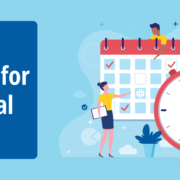A CEO’s Legacy
Under Phil Pangrazio’s leadership, Ability360 developed into one of the nation’s largest Centers for Independent Living and established itself as a premiere model for other centers throughout the country.
Phil has been helping build Ability 360 for 21 years now, prior to working at Ability 360 he started off in health care and got his Master’s Degree in Health Services Administration and Policy from Arizona State University. He worked for 10 years at Maricopa Integrated Health System and Maricopa Medical Center, where he held multiple positions in financial Management and Administration. Then Phil landed his Job with Ability 360.
Phil guided Ability360 to an annual budget of more than $48 million and the expansion of its programs and services to include Home Care Services, SSA Work Incentives Planning and Assistance, Ticket-to-Work Employment, Youth Transition Services, and the Living Well with a Disability program, among others.
Phil also directed the planning, construction and financing of the Ability360 Center in Phoenix, home to Ability360 and 9 other non-profit organizations that serve people with disabilities in Arizona. The $12.3-million Ability360 Sports & Fitness Center was opened in 2011, the first of its kind in the southwest.
Creating Ability360
The whole goal was to bring together the different non-profits, that they always collaborated with, but not to the degree they could have if they were closer in proximity, this concept came up and gave them the idea for the Disability services campus, they started thinking about it and they thought ‘hey this could be really cool’ they put in the sports fitness center which was kind of the cherry on the cake, pretty unique, really never had been done In the country, first to do this disability campus thing and also a sports facility for the disabled, sports and fitness is important to these individuals, and without this they might not have a place to host their games, like wheel chair basketball, etc., and a place to call home.
Phil first got involved in the early 1990s. He was first on board for 9 years before becoming CEO, he was involved in the governance aspect of things which he believes helped him when he stepped into the CEO role. There was a desire to do this (build a campus for the disabled) for a while, most of the individuals who were on the board when Phil started are no longer there, and when he started he looked up to these board members as his mentors and Hero’s, they wanted ability 360 to be self-stainable, efficient and didn’t want to be dependent on government grants. They wanted a more diversified revenue stream. Phil started the community based program that partners with us, which is a revenue stream for the organization which allows them to have resources to invest in other things.
The Future for Agencies
The Future is going to be interesting for the organization, and disability rights as a whole. Disability Rights are evolving and changing, but it is hard to say what it will look like in the future, The work that was done in the 70s and 80s was so prominent, however there will still be plenty for the younger generation to work on and advance, and advance disability rights depending on what is going on at the time, but it will definitely be interesting to see what is in the cards for people with disabilities in the future, hopefully more people with disabilities will be working and not having to live off the government , because that isn’t the best place to be in.
Advice
The biggest thing is to treat your employees with fairness, listen to them, and realizing you can’t function without your people. Treat them well – that goes along way.




